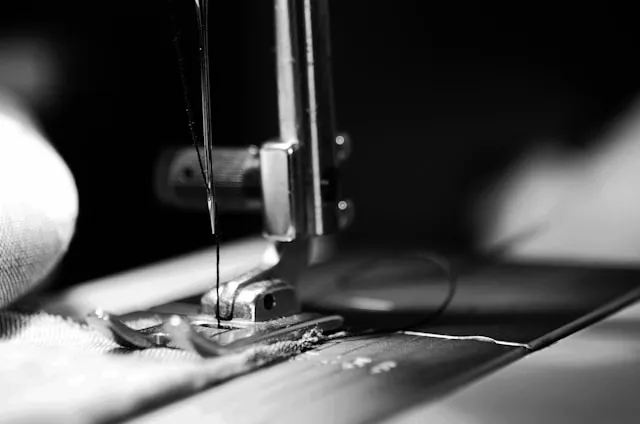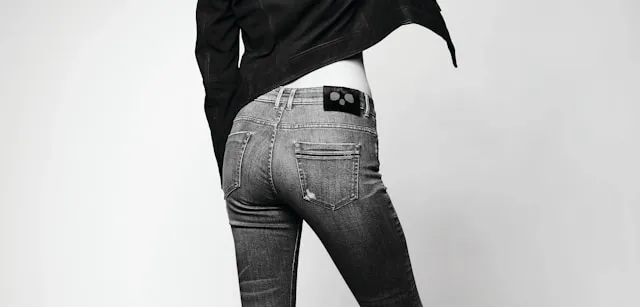How To Attach Patches Without Sewing: Methods, Materials & Fabrics For Best Results
When it comes to personalizing clothing and accessories, customized patches can add flair and a unique style to virtually any item. However, not everyone has the time or skills to sew. In many cases, it helps to understand how to attach patches without sewing, and that is precisely what we delve into in this guide.
From innovative materials to clever techniques, discover how to achieve a professional finish without ever touching a needle and thread. Whether you’re a novice crafter or a little more experienced, our comprehensive guidance will give you everything you need to attach patches without sewing to make use of customized patches.

Key Takeaways
- You have many options for attaching patches without sewing, including iron-on, peel-and-stick, Velcro, fabric glue, safety pins, and more.
- The best choice comes down to your needs and preferences, as well as the fabric type and your intended use.
- Whatever method you choose, itÔÇÖs important to follow the correct attachment process and be mindful of steps to protect the fabric and achieve a strong bond.
- We supply custom patches with a range of backing types to deliver the attachment method that works for you.
Table of contents
-
How To Attach Patches Without Sewing
-
Can I Use Iron-On Patches Without Sewing?
-
How Do You Attach Velcro To Fabric Without Sewing?
-
Can Double-Sided Tape Be Applied On Fabric?
-
Applying Patches On Clothes With Silicone Adhesive
-
Putting On Patches With A Heat Press Machine
-
How To Use Fabric Glue Instead Of Sewing To Apply Patches?
-
How Do You Attach Patches To Delicate Fabrics Without Causing Damage?
-
Comparing Iron-On Vs. Sew-On Patches: Which Is Better?
How To Attach Patches Without Sewing
Learning to apply patches without sewing opens up many creative possibilities for personalizing your clothing and accessories. The most common non-sewing methods include:
- Iron-on
- Velcro
- Adhesive
- Safety pin
With iron-on patches, you have a simple and durable solution that only requires the application of heat. Velcro is great for versatility, as you can easily attach and remove patches. Adhesive patches are convenient and quick, but only provide a temporary attachment, while safety pins are a classic solution that is easy to adjust.
There are unique benefits to every method for different needs and preferences. We will look more closely at every method of how to apply patches without sewing, exploring strengths, weaknesses, and best practices. Read on to master these non-sewing techniques and revolutionize your patch application process.

What Is The Best Way To Put On Patches Without Using A Needle And Thread?
When it comes to attaching patches without sewing, there are several viable methods for how to put a patch on a hat or any other apparel. Iron-on patches are the most popular alternative, utilizing heat for a secure bond that works well on fabrics like cotton or denim. Adhesive tapes provide a quick, easy application that is best suited to smooth surfaces like leather and nylon. Velcro patches, meanwhile, offer versatility, and can be applied to a variety of fabrics using the two-part system, including cotton and polyester.
There are also some more niche approaches to explore. Fabric glue provides a permanent bond on most fabrics, meaning you could get a durable attachment on things like canvas or denim. Safety pins are a classic choice for temporary attachments, suitable for lightweight fabrics like cotton and polyester.
Ultimately, the best method to attach patches without sewing depends on your needs and preferences, as each has its advantages and disadvantages. Explore your options to achieve a seamless patch application.
Can I Use Iron-On Patches Without Sewing?
Iron-on patches are a great alternative to sew-on ones, and you can design your own with us. They have a heat-activated adhesive on the back that creates a durable attachment to fabric when you expose it to heat, usually with an iron. Here’s how to iron on patches to jeans and other apparel:
- Preheat the iron to the recommended temperature.
- Place the patch adhesive side down on the fabric and cover with a thin cloth.
- Press the iron firmly onto the patch for the recommended duration.
- Allow it to cool before checking the bond.
You should ensure the steam setting of the iron is switched off for a robust attachment. And always wash the garment inside out before air drying to preserve the adhesion. This way, you have a strong alternative to sewing that stands the test of time.
Create premium custom iron-on patches online
Work with us to create custom iron-on patches that offer vibrant aesthetic, outstanding durability, and a robust attachment that doesn't require any sewing, making them convenient and reliable.
How Do You Attach Velcro To Fabric Without Sewing?
It can be straightforward to attach Velcro to fabric without doing any sewing. The first step is to choose the appropriate Velcro for your project, considering things like an adhesive backing and durability. Once you have your hook-and-loop system ready, attachment works like this:
- Clean the fabric and patch thoroughly for optimal adhesion.
- Cut the Velcro to size and apply to both the fabric and the patch.
- Follow the manufacturer instructions to ensure a secure adhesive bond.
Once you have the Velcro in place, you can easily attach and remove your patch at will. Velcro is great for temporary or interchangeable attachments if you like to switch up your look frequently. Use it on clothing, bags, or accessories, and follow these steps for a lasting attachment.
Is Velcro An Alternative For Easy Patch Attachment And Removal?
We supply custom Velcro patches and they are a popular choice for our customers. Choose a two-part Velcro backing for the most versatile solution, providing you with a patch that has Velcro on the rear and its equivalent part with an adhesive backing to stick to your clothing or accessory. It is a simple way to attach patches without sewing, and it offers something unique.
You could have multiple patches on rotation using this method. This kind of versatility is unique to hook-and-loop patches, as they are designed to be attached and removed. They are also the ideal solution for a temporary attachment that can be removed when no longer needed.
Can Double-Sided Tape Be Applied On Fabric?
Double-sided tape is an option to apply patches without sewing, but its effectiveness may vary depending on the type of fabric. For the most part, double-sided tape adheres best to smooth, non-porous fabrics, such as:
- Polyester
- Nylon
- Leather
- Latex
It may not provide such a reliable adhesion to fabrics like cotton or linen. We supply high-quality custom adhesive patches with a peel-and-stick backing that may be a stronger option than using double-sided tape.
If you decide to try a double-sided tape solution to apply patches without sewing, make sure the surface is clean and that you press firmly to achieve a secure adhesion. When removing the tape, gently peel it to avoid damaging the fabric, and use a mold solvent or adhesive remover to get rid of any residue left behind.

Double-Sided Tape And Safety Pins For Temporary Patch Attachment Methods?
Temporary attachments definitely have their place, and these are common scenarios where you might seek the best way to attach patches without sewing. Double-sided tape is a quick and easy solution that should provide a good adhesion for a single use. It works best with lightweight fabrics and could be perfect for costumes or event attire.
Safety pins are another possible option, allowing patches to be attached and removed easily with no damage to most fabrics. However, it will leave a hole in non-porous fabrics like leather or polyester, so consider your choice carefully. We supply customized patches with a safety pin backing if you want to create a personalized look for any occasion.
Situations that might call for temporary patch placement include:
- Costumes
- One-off events
- Wearing rented garments
- Experimenting with patch placement
Double-sided tape and safety pins provide practical solutions for quick customization without sewing.
Choose a flexible alternative to sewing for patch attachment
Our custom Velcro patches are popular as removable patch types that still offer the full range of materials, but can be added and removed at will.
Design yoursApplying Patches On Clothes With Silicone Adhesive
Silicone adhesive is another option for applying patches to clothing, offering a durable, long-lasting attachment method. The process is quite simple:
- Clean both the patch and the fabric to ensure a strong adhesion.
- Apply a thin, even layer of adhesive to the patch rear.
- Press the patch firmly onto the fabric and follow the manufacturer instructions for drying time.
Silicone adhesive delivers a strong bond suitable for outdoor and high-wear fabrics, as it is resistant to moisture and extreme temperatures. Compared with traditional fabric adhesives, silicone offers enhanced durability whilst retaining flexibility, so it is an ideal solution for attaching our customized patches to jackets, backpacks, and other outdoor wear.
However, we urge caution as there is a risk of getting the adhesive on unintended areas of the fabric. This could lead to damage or discoloration, which will also be an issue if you ever wish to remove your patch.
Putting On Patches With A Heat Press Machine
A heat press can be used to put on patches without sewing to achieve a strong, long-lasting bond. One of our custom iron-on patches will be required, and a heat press is just one answer to how to iron on patches without an iron.
Here’s how it works:
- Preheat the heat press to the recommended temperature for the patch and fabric.
- Place the fabric on the press bed and position the patch exactly where you want it, adhesive side down.
- Cover the patch with parchment paper or a thin cloth.
- Press the heat press down firmly for the specified duration.
It is important to let the patch cool before handling to allow the adhesive to deliver a secure attachment. Adjust the temperature and press duration if you don’t get an optimal adhesion the first time.
Need a temporary patch attachment without sewing?
Our custom adhesive patches are perfect for temporary or one-off uses, providing a firm yet temporary attachment for your custom patches for events and similar occasions.
How To Use Fabric Glue Instead Of Sewing To Apply Patches?
Fabric glue is a convenient alternative to sewing when applying patches to apparel. There are many fabric glues out there, but popular options include:
- Aleene’s Original Tacky Glue
- Dritz Unique Stitch
- E6000 Fabri-Fuse
Begin by cleaning the patch and the fabric, then apply a thin, even layer of the glue to the back of the patch. Press it down firmly onto the desired area of the fabric with even pressure all over. Let the glue dry in accordance with manufacturer instructions before handling.
Fabric glue offers convenience and versatility, but it is unlikely to be as durable as sewing. Some glues may even leave a residue or cause fabric to stiffen, so choose your product carefully.
Can You Use Hot Glue Or Super Glue To Attach Patches?
Hot glue and super glue are common adhesives for many applications, but they may not be the best choice for attaching patches without sewing. Hot glue creates a very stiff bond and can be messy to apply, while super glue often leaves a visible residue and may not adhere well to certain fabrics.
If you do choose to use these adhesives, apply them sparingly or you may find that it seeps through the fabric and causes damage. You should also ensure both the patch and the fabric are clean and dry before application. Hot glue and super glue may provide a temporary fix, but we cannot recommend them for a long-term solution on fabric.
If you want a reliable, durable attachment, consider alternatives like:
- Custom iron-on patches
- Fabric glue
- Silicone adhesive
How Do You Attach Patches To Delicate Fabrics Without Causing Damage?
Fabrics like silk and lace throw up very specific challenges when considering how to apply patches without sewing. To avoid damage, opt for gentle adhesives like fabric glue that is specifically designed for delicate materials. Before you apply the adhesive, test it on a small, inconspicuous area of the fabric and check for discoloration or damage.
You could sidestep this completely by opting for temporary attachment methods. Our custom patches can be ordered with the following backings:
- Peel-and-stick
- Velcro
- Safety pin
These allow a temporary solution that can be easily removed without damaging the delicate fabric. However you proceed, handle the fabric with care to prevent stretching or tearing. With proper attention and gentle handling, you can add patches to delicate fabrics without sewing.
Is It Possible To Attach Patches To Leather Without Sewing?
It is possible to attach patches to leather without sewing if you choose the right techniques or adhesives, but special care is required:
- Clean the leather and remove any oils that may interfere with adhesion.
- Select a strong adhesive specifically designed for leather.
Look for products labeled as leather glue or leather adhesive. Before you apply them, consider testing on an inconspicuous area to ensure there are no adverse reactions. Some people choose specialty tapes for this application, or you could opt for our custom iron-on patches as a simple solution.
Whatever approach you take, follow the manufacturer instructions carefully for optimal results. The main goal should be achieving a durable bond that doesn’t harm the leather material, so prioritize these things at all times.

How To Attach Patches Without Sewing To Stretchy Or Technical Fabrics
Recent trends for casual fashion have included certain gym- or sports-related brands, and their garments have made their way into people’s daily wardrobes with increasing prominence. With the continuing rise in activewear through 2025, many readers are now looking to apply patches to stretchy or technical fabrics. These include:
- Lycra
- Spandex
- Moisture-wicking blends
For these, standard adhesives may crack or peel due to the movement of the fabric. Instead, we recommend using a flexible glue or heat-activated stretch adhesive designed for elastic materials. Seek out products labeled “washable” and “stretch-compatible”.
Avoid iron-on patches unless the fabric care label allows moderate heat, and always test on a small area first. Alternatively, opt for Velcro backing with sewn loop panels to preserve the fabric’s stretch.
When you work with us, you can create custom patches from various materials with a range of backing options. This means you can create the right option for your apparel and enjoy a safe and durable attachment.
Embrace maximum style and convenience with no sewing
Our custom designer iron-on patches can feature intricate, vibrant custom designs to add to your clothing by applying heat and pressure - no sewing required, ever.
Create yours with flairComparing Iron-On Vs. Sew-On Patches: Which Is Better?
When comparing iron-on and sew-on patches, there are various considerations to be mindful of. Here are some fundamental areas for comparison:
- Iron-on patches are typically easier and quicker to apply as you can attach these patches without sewing skills. Sew-on patches require knowledge of how to sew patches onto jeans and other apparel, but could provide a more durable adhesion.
- Sew-on patches have a more traditional, handcrafted appearance. Iron-on patches, meanwhile, appear more seamless and uniform once attached.
- Durability depends on the quality of the adhesive for iron-on patches and the strength of the stitching for sew-on ones.
When you are choosing between the two patch types, consider the fabric you are attaching to. Some materials are not optimal for heat application. You should also consider the intended use and longevity. Ultimately, the best choice between iron-on and sew-on patches comes down to personal preference.
Frequently Asked Questions About How To Attach Patches Without Sewing
How To Attach Patches Without Sewing?
You have various choices for attaching patches without sewing. Options include iron-on, Velcro, peel-and-stick, safety pin, double-sided tape, and fabric glue, so explore your options carefully.
How Do You Attach Velcro To Fabric Without Sewing?
You can get peel-and-stick Velcro attachments that can adhere to fabric and patches without the need for sewing. You could also use fabric glue or double-sided tape for this.